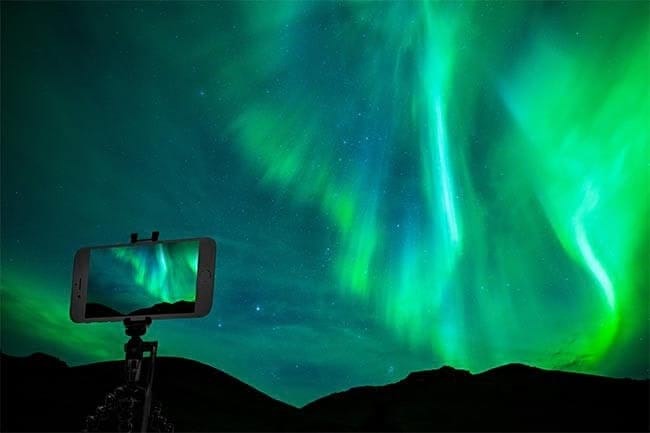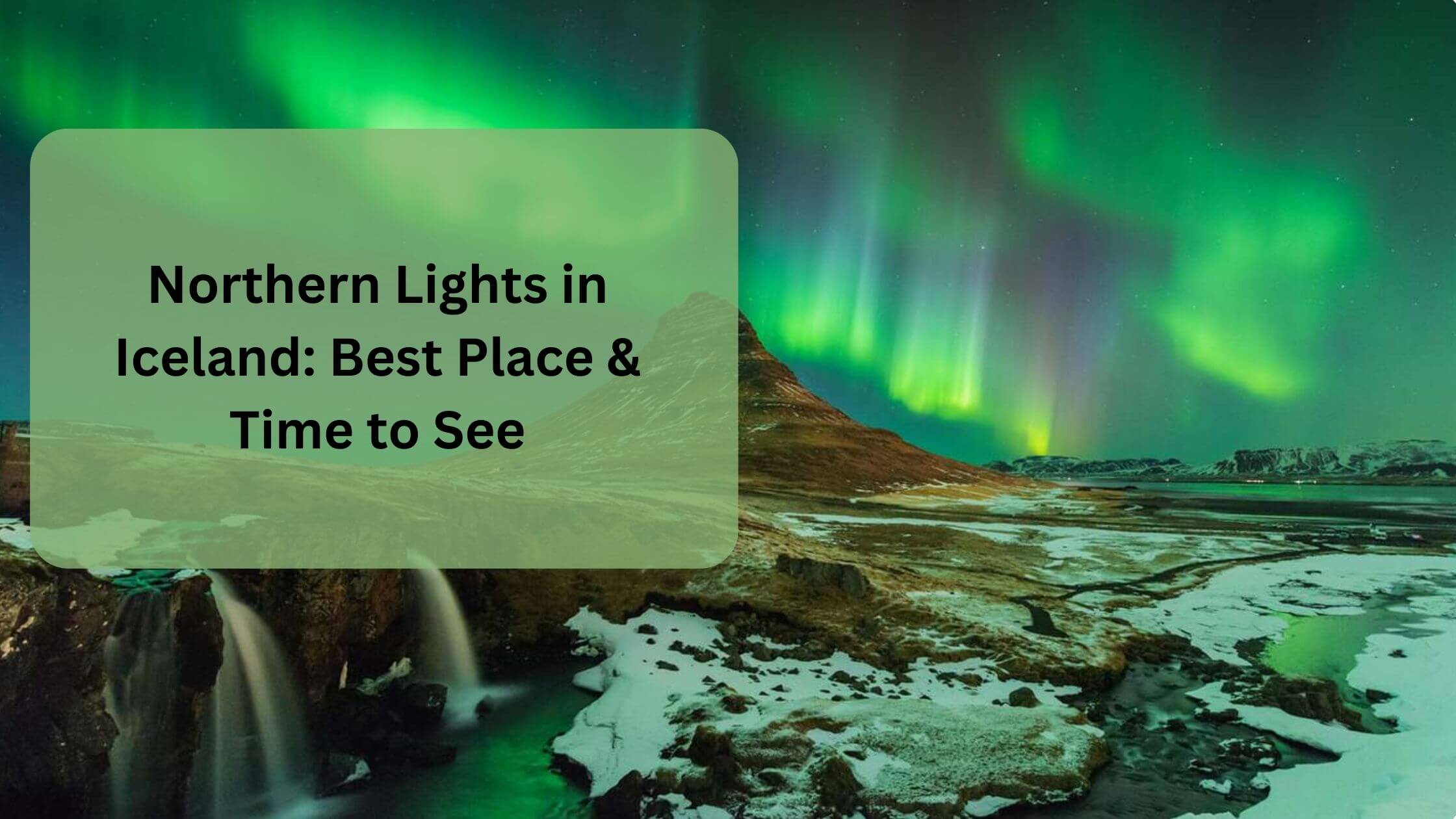Witnessing the celestial dance of the Northern lights in Iceland, also known as the aurora borealis, has long enchanted travelers and locals alike. Iceland, with its dramatic landscapes and proximity to the Arctic Circle, offers a front-row seat to this mesmerizing natural spectacle.
In this comprehensive guide, we will explore the best places and the optimal time to witness the awe-inspiring Northern Lights season in Iceland. Get ready to embark on an extraordinary journey under the shimmering auroras of the night sky!
Understanding the Northern Lights
To truly appreciate the enchantment of the Northern Lights, it’s essential to understand the science behind this extraordinary phenomenon. The aurora borealis occurs when charged particles from the sun collide with the Earth’s atmosphere, creating a breathtaking display of light and color.
The process involves the interaction of solar winds, the Earth’s magnetic field, and atmospheric gasses, resulting in vivid hues of green, pink, and violet dancing across the night sky.

Best Time to See the Northern Lights in Iceland
For travelers seeking to witness this ethereal spectacle, timing is everything. The Northern Lights season in Iceland typically begins in late September and extends until early April.
However, the ideal time to catch the Northern Lights in all their glory is from late September to mid-April, during the winter months. During this period, the nights are longer, and the skies are darker, providing optimal conditions for spotting the auroras. It’s worth noting that, while the Northern Lights in Iceland can be visible outside this season, the chances of seeing them are significantly higher during the recommended months.
Factors Affecting Visibility
Witnessing the Northern Lights in Iceland is an awe-inspiring experience, but several factors can influence how visible the auroras are on any given night. Let’s break down these factors in a more simplified way:
1. Weather Conditions
- Clear Skies are Key: Cloudy skies can obstruct the view of the Northern Lights, making it essential to choose nights with minimal cloud cover.
- Stay Updated on Weather Forecasts: Check weather forecasts regularly to plan your outing on a night with the best chances of clear skies.
2. Light Pollution
- Head to Remote Areas: City lights can diminish the brilliance of the auroras. Opt for locations away from light pollution to experience the Northern Lights at their full splendor.
- Embrace the Darkness: Embracing the darkness of Iceland’s wilderness enhances the overall experience, as it magnifies the celestial beauty above.
3. Geomagnetic Activity (Kp Index)
- Higher Kp Index, Brighter Auroras: The Kp index measures the geomagnetic activity, with higher values (usually above 2) indicating a greater chance of vibrant and dynamic Northern Lights displays.
- Monitor the Kp Index: Use websites or apps that provide real-time Kp index data to plan your Northern Lights outing on a night with higher geomagnetic activity.
By considering these factors and planning your Northern Lights adventure wisely, you can maximize your chances of witnessing this breathtaking celestial dance in Iceland’s dark and starry skies.
Best Places to Witness the Northern Lights in Iceland
One of the most exciting aspects of experiencing the Northern Lights in Iceland is the variety of stunning locations available for viewing. Each location offers a unique backdrop, making the auroras even more magical.

Here are some of the best places to witness the Northern Lights in Iceland:
- Thingvellir National Park: A UNESCO World Heritage Site, Thingvellir National Park not only holds historical significance but also offers an awe-inspiring setting for observing the Northern Lights. The park’s vast open spaces and dramatic landscapes provide an enchanting stage for the celestial dance above.
- Kirkjufell: This iconic mountain near the town of Grundarfjörður is a photographer’s dream. With its symmetrical shape and striking surroundings, Kirkjufell makes for a picture-perfect location to capture the Northern Lights’ beauty.
- Jökulsárlón Glacier Lagoon: Located in the southeast of Iceland, Jökulsárlón Glacier Lagoon is a place of ethereal beauty. The lagoon’s still waters and floating icebergs create a mirror-like surface, reflecting the dancing lights above, amplifying the enchantment of the auroras.
- Reynisfjara Black Sand Beach: This otherworldly black sand beach, adorned with basalt columns and sea stacks, provides a dramatic and mystical setting for witnessing the Northern Lights. The combination of crashing waves, dark sands, and colorful lights creates an unforgettable experience.
Tour and Activity Options
To enhance your Northern Lights experience in Iceland, consider joining guided tours led by experienced experts. These tour operators possess an intimate knowledge of Iceland’s best Northern Lights viewing spots, increasing your chances of witnessing the celestial phenomenon in all its glory.
Tours often include transportation to remote areas with optimal visibility and knowledgeable guides who can interpret the science and folklore surrounding the auroras.
Reputable tour operators like Icelandic Adventures and Aurora Hunters offer a variety of Northern Lights tours, catering to different preferences and budgets. From small group excursions to private tours, these operators provide unforgettable experiences that leave travelers with cherished memories of the dancing lights above the Icelandic skies.
Photography Tips To Capture Northern Lights on Camera

Capturing the Northern Lights on camera is a rewarding and unforgettable experience. To increase the likelihood of capturing stunning photographs, consider the following photography tips:
- Use a Sturdy Tripod: Stability is key to capturing clear, sharp images of the Northern Lights. A sturdy tripod prevents camera shake during long exposure shots, ensuring crisp photos.
- Choose Manual Mode: Set your camera to manual mode to have full control over exposure settings. This allows you to adjust shutter speed, aperture, and ISO to capture the best possible images.
- Long Exposure: Use a long exposure time, typically between 10 and 30 seconds, to capture the lights’ movement and vibrant colors.
- Wide Aperture: Select a wide aperture (low f-number) to allow more light into the camera sensor, enhancing the brightness of the auroras.
- Remote Shutter Release: To avoid camera shake when pressing the shutter button, use a remote shutter release or a timer delay.
- Pack Spare Batteries: Cold weather can drain camera batteries faster than usual. Ensure you have spare batteries to avoid missing out on capturing the auroras.
Dressing appropriately is equally important when embarking on a photography expedition to photograph the Northern Lights. The winter temperatures in Iceland can be harsh, so wear warm, layered clothing and insulated footwear to stay comfortable during the long hours of waiting for the lights to dance.
Safety Precautions
While witnessing the Northern Lights in Iceland is a truly magical experience, it’s crucial to prioritize safety throughout your journey. The winter season can be harsh, with freezing temperatures and unpredictable weather. To stay safe and enjoy your Northern Lights adventure to the fullest, consider the following safety precautions:
- Dress Warmly: Wear thermal layers and insulated clothing to stay warm in the sub-zero temperatures.
- Waterproof and Windproof Gear: Iceland’s weather can be unpredictable, so invest in waterproof and windproof clothing to protect yourself from rain, snow, and gusts of wind.
- Inform Someone About Your Plans: Before venturing out to chase the Northern Lights, let a friend or family member know your itinerary and expected return time.
- Travel with a Guide: If you’re not familiar with Iceland’s terrain, consider joining a guided tour led by experienced professionals. They know the area well and can navigate through challenging conditions.
- Stay Updated on Weather Conditions: Continuously check weather forecasts and aurora forecasts to maximize your chances of witnessing the Northern Lights.
Local Culture and Myths
The Northern Lights hold a special place in Icelandic folklore and culture. According to local myths, the lights are believed to be the spirits of the dead dancing across the sky. The sight of the auroras was often regarded as a bridge between the living and the deceased, a captivating and spiritual connection. Embrace these mythical tales while in Iceland, and let the enchanting stories add an extra layer of wonder to your Northern Lights experience.
Conclusion
The Northern Lights season in Iceland offers an unparalleled opportunity to witness one of nature’s most breathtaking spectacles. From late September to mid-April, venture into the Icelandic wilderness to catch the celestial dance of the aurora borealis. The best places to witness the Northern Lights, such as Thingvellir National Park, Kirkjufell, Jökulsárlón Glacier Lagoon, and Reynisfjara Black Sand Beach, provide awe-inspiring backdrops to this ethereal display.
While on your Northern Lights adventure, consider joining guided tours to increase your chances of spotting the auroras and gaining insights from experienced guides. Remember to equip yourself with photography gear and dress warmly to capture the magical lights on camera.
Immerse yourself in Icelandic folklore and local myths surrounding the Northern Lights, and cherish the spiritual connection between the living and the departed as you witness the auroras dance across the night sky.
Prepare for an extraordinary journey to watch Northern Lights in Iceland that will leave you spellbound and forever captivated by the beauty of the celestial lights above.

